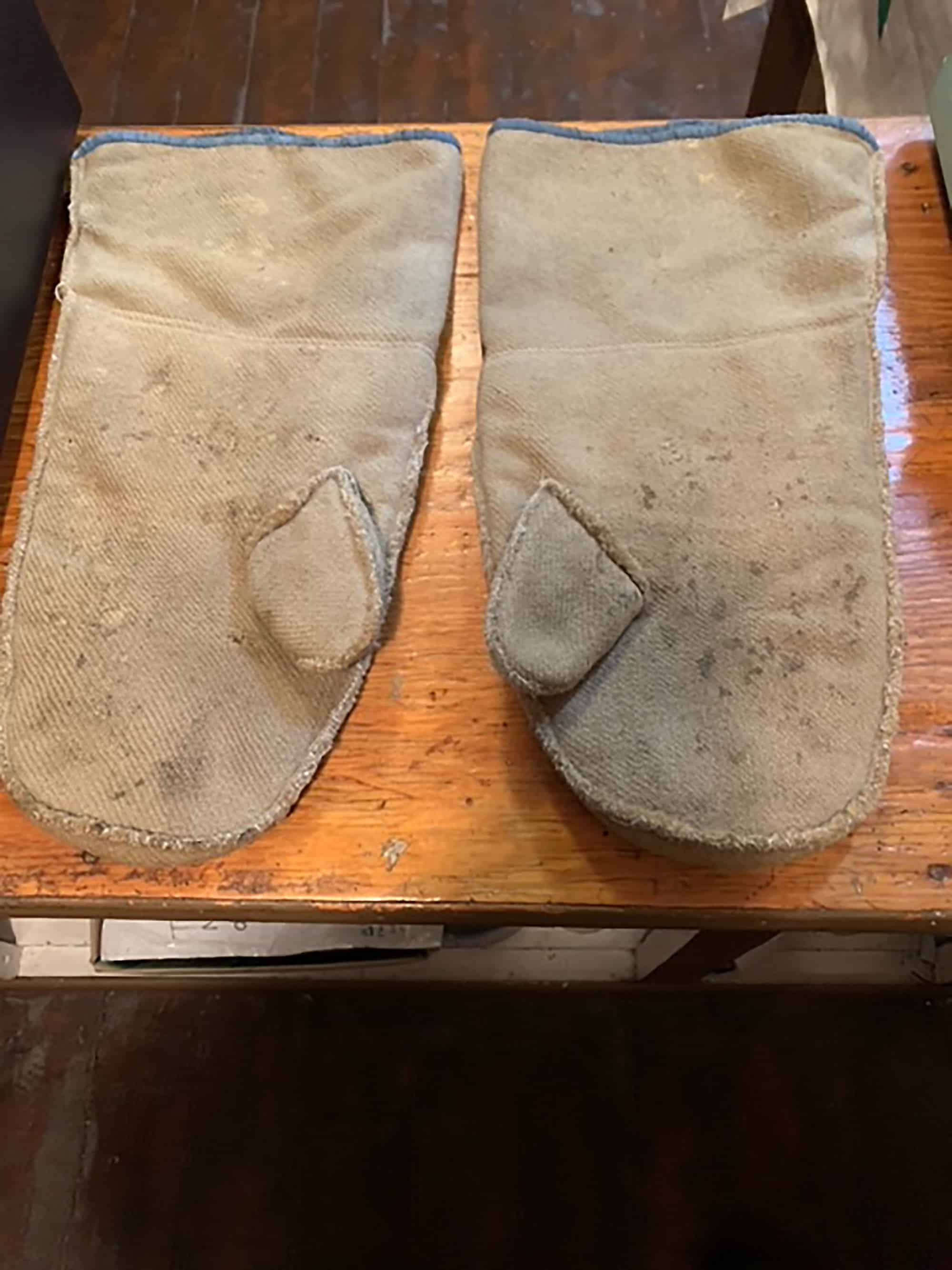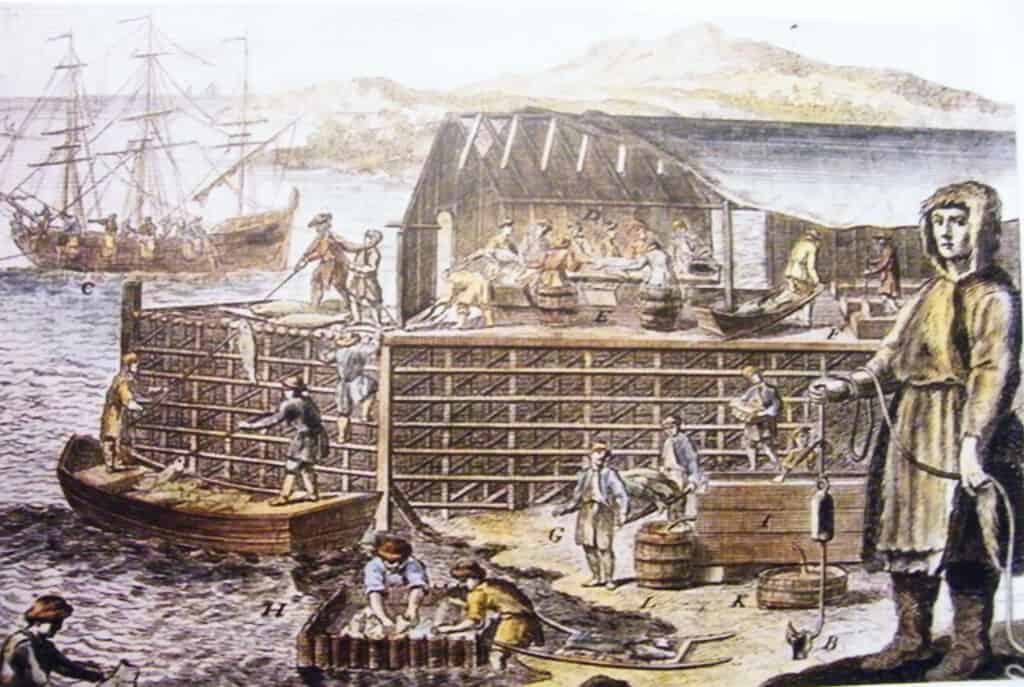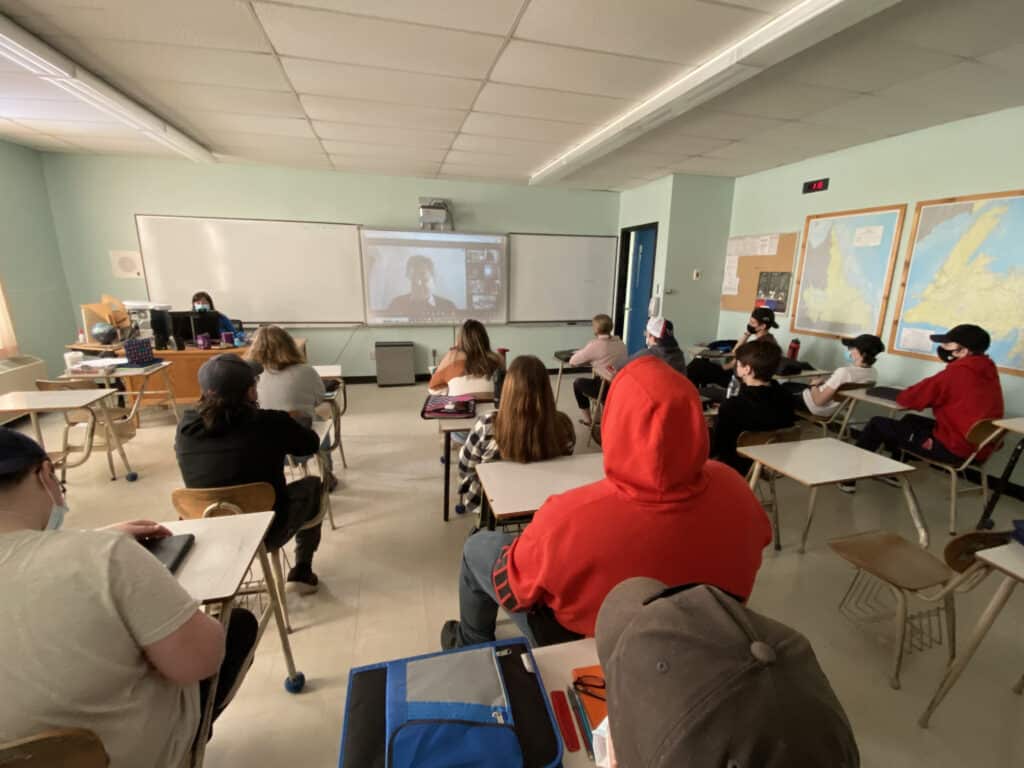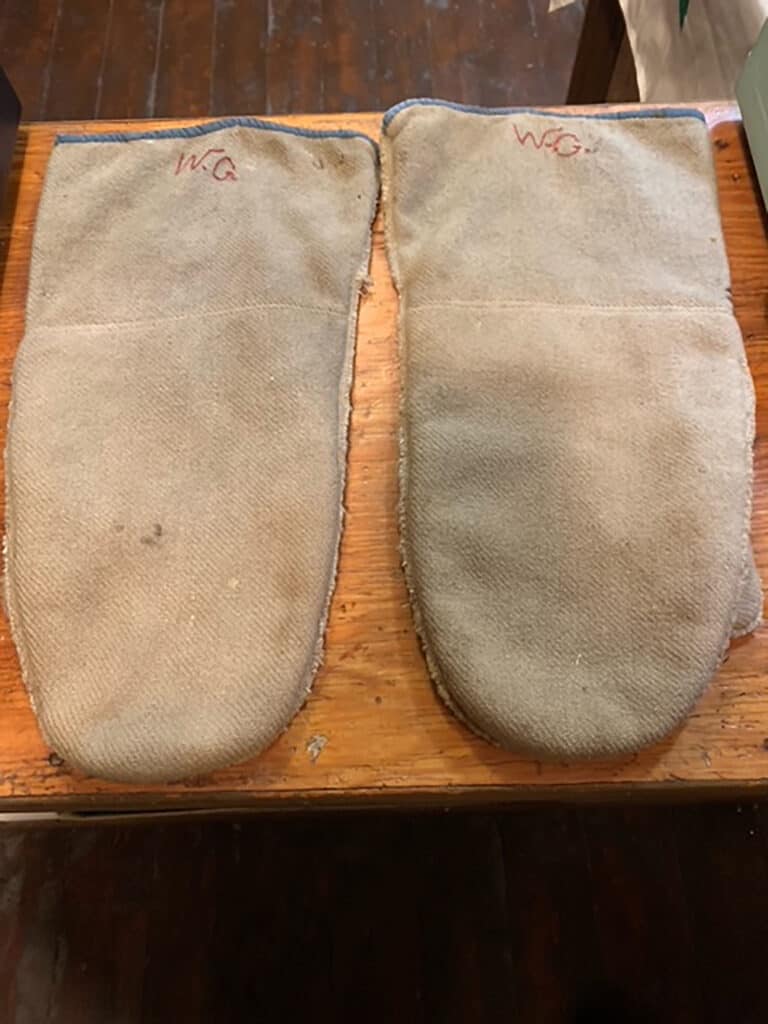A unique heritage project is reviving historic connections between North Dorset and Newfoundland – and has already led to a couple of a remarkable discoveries, says BV columnist Roger Guttridge.
A humble pair of mittens that probably started life in Sturminster Newton has turned up in a private museum in a remote part of Newfoundland – and is causing ripples of excitement on both sides of the Atlantic. The mittens are the world’s only known surviving garments made of swanskin, which was uniquely manufactured in the Blackmore Vale from the 16th to the 19th centuries.

Dorset’s fishing mitts
They came to light as a direct result of a heritage project called the Swanskin Seafarers of Sturminster Newton, which is bringing together historians, museums, teachers and students in both Sturminster and
Twillingate, Newfoundland. As word of the project spread around Newfoundland’s remote north coast, Peter Porter came forward to say he had the mittens in his museum on Change Islands.
Peter has a ledger recording the sale of the mittens in 1899 but they may be decades older – and
the material would have been made in the Blackmore Vale. Former teacher Jocelyn Bath told the BV from Twillingate: ‘My father remembers his dad having a pair. “They were favoured by the fishermen because they were warm but could also be removed quickly when the need arose while fishing or sealing.”
Twillingate and Sturminster
Jocelyn has also uncovered some family documents dating back to 1816 that included orders for swanskin and references to Sturminster Newton. An estimated 92% of the ancestors of people in Twillingate (pop 2,121) and neighbouring Change Islands (pop 208!) and Fogo Island (pop 2,244) came from Dorset – and many of those from North Dorset.
As I discovered when I visited Twillingate in 1997, a huge proportion of residents have traditional Dorset surnames, and speak with strong elements of the Dorset accent and dialect. The story of North Dorset’s close connection with Newfoundland dates back to the 16th century, when hundreds of ships sailed
annually from West Country ports to exploit the North Atlantic’s rich stocks of codfish.
No swans were harmed in the making of these mittens …
In those days the Blackmore Vale was predominantly sheep- farming country and much of the wool was turned into a thick flannel-type cloth called swanskin. Swanskin, whose only connection with swans was its colour, was ideal for clothing fishermen working in the cold and wet North Atlantic waters, and Newfoundland became the main market for a fast-growing production line. The earliest reference to swanskin is dated 1578, when Sturminster clothier James Yonge (Young) applied for tax relief on cloth sold
to ‘mariners going beyond the seas’.
In 1611, a fulling mill was built alongside Sturminster’s grain mill. Here water- powered fulling stocks hammered the fabric until it was sufficiently felted to make it waterproof. By 1793, no fewer than 1,200 Sturminster people were employed in swanskin production, an industry which also extended to Shaftesbury,
Stalbridge and the villages. Between 4,000 and 5,000 35-yard pieces were produced each year and carted to Poole, whose ships dominated the Newfoundland trade in the 18th and 19th centuries.
A trade directory reported of Sturminster: ‘The principle manufactory carried on here is for white baize or swanskin, in which the poor, who are very numerous, are chiefly employed.’
The Sturminster dialect poet Robert Young recalled that the racks on which the cloth was fixed covered one or two fields. ‘Many a time I have watched the weavers’ swift shuttles passing between the tightened threads,’ he wrote. The fulling mill was demolished about 1800, when the swanskin trade was beginning to decline in the face of competition from the industrialising North and Midlands. By 1812, the number of people employed had dropped to 700 or 800.
As this trend continued, some of the Sturminster cloth merchants filled the economic vacuum by switching to cod fishing. This in turn led to a dramatic increase in the migration of Dorset people to Twillingate and other developing fishing communities.

High school Zoom
The Swanskin Seafarers project, supported by a £14,000 grant from the Association of Independent Museums (AIM) and the National Lottery Heritage Fund, will include research led by the Sturminster Newton Heritage Trust, arts projects – including a film – led by arts company Emerald Ant and hands-on research by students on both sides of the Atlantic. As the former Old World Connection columnist for Newfoundland’s Downhomer Magazine, I was honoured to kick off the project by talking to 100 students at Sturminster
High School and, by video link, to students at JM Olds Collegiate (JMOC) in Twillingate. Students from the two schools have since met each other via Zoom and more exchanges are planned.
The Twillingate youngsters are especially intrigued by the discovery that most of their ancestors came from a small area of southern England and are plunging into family history. JMOC principal Stephen Earle said his school community felt privileged to be involved in a project which had already exceeded expectations.
‘Our students are already making some amazing connections between Twillingate and Sturminster Newton, particularly around their ancestry,’ he said. ‘This project is allowing us to easily expand into some of our
deep learning objectives and we look forward to continuing this partnership.’

The Twillingate students are planning a school trip to Peter Porter’s museum on Change Islands, which is also home to a Newfoundland pony refuge. The hardy ponies, whose numbers have dwindled in recent
decades, are descended from the New Forest, Dartmoor, Exmoor and Connemara ponies that went out on the ships as working animals.
Jocelyn Bath added: ‘We’ve had so much community interest in this project on our end. The response has been fantastic.’ At Sturminster High School, one of the topics that has caught students’ imagination is the
apprenticeship of young orphans to the Newfoundland trade.
In 1621, Sturminster clothier William Williams left money in his will to apprentice two boys a year – from Sturminster, Shaftesbury and Blandford in rotation – ‘to the sea service’. Each apprentice received ‘two jackets, two pair of breeches, a greatcoat, three shirts, two pair of trousers, one hat, two pair of shoes, two pair of stockings, two handkerchiefs, knives, combs, caps, bed, pillows and a large blanket’. The William Williams charity, which also aided ‘clothiers, serge-makers, linen weavers and felt-makers’, continues to fund students 400 years later (see BV March issue here)
Sturminster High School students are furthering their studies with visits to the mill, museum and the
Dorset History Centre. ‘This project has enabled staff and students to weave the “golden thread” of local history through the existing curriculum, creating exciting opportunities for further study,’ said the school’s
head of humanities, Sandra Mitchell.
by Roger Guttridge


